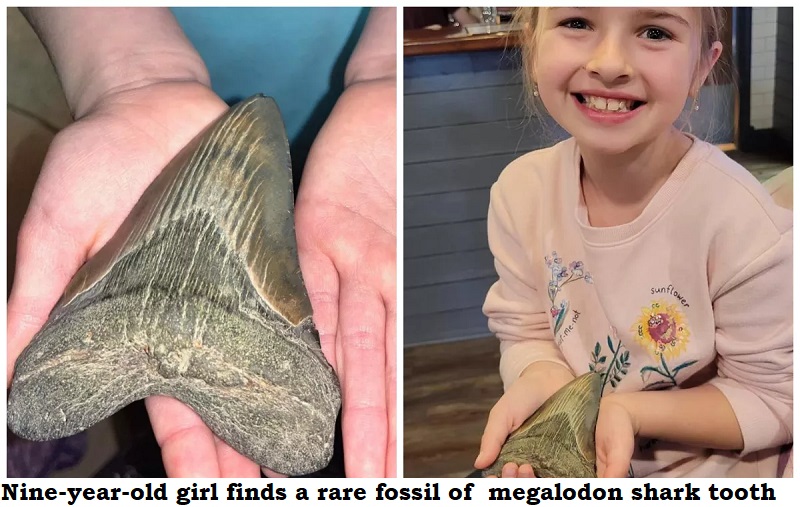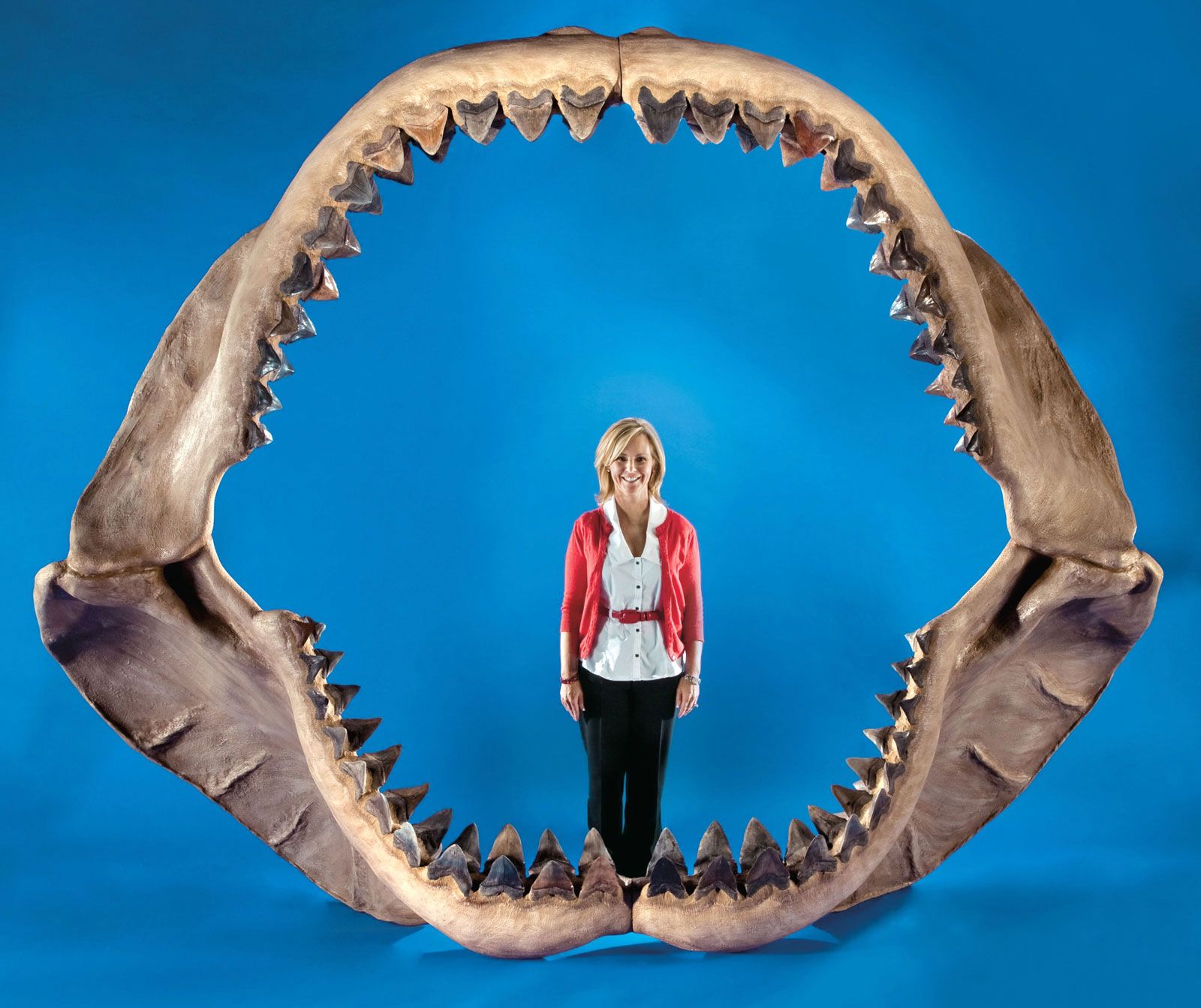A 9-year-old Maryland girl came across the discovery of a lifetime while visiting a local beach this month.
Young Molly Sampson was walking in the waters of Calvert Beach on Christmas Day when she came across something that caught her eye — a large, dark-colored tooth.
Turns out, the palm-sized tooth belonged to an animal that died at least 3.5 million years ago: an Otodus megalodon shark.
“She told me she was wading in knee-deep water when she saw it and dove in to get it,” her mother, Alicia, told CBS News. “She said she got her arms all wet, but it was so worth it.”
“The only thing Molly really wanted for Christmas was insulated chest waders because she knew she was missing out on some good fossil finds further out in the water,” she added of her daughter. “As soon as they finished breakfast, they got their waders on as quick as they could and headed to the cliffs with my husband Bruce.”
:max_bytes(150000):strip_icc():focal(549x78:551x80):format(webp)/megalodon-shark-tooth-011223-2-3f040bb818064d5ba54796340bdd88e0.jpg)
CALVERT MARINE MUSEUM/FACEBOOK
Calvert Marine Museum/facebook
Alicia said Molly had been hoping to find a “meg,” the nickname for a megalodon fossil.
“For whatever reason, she spoke it into existence on Christmas morning,” she said.
The family took the fossil Molly found to the Calvert Marine Museum to confirm it was what they thought.
:max_bytes(150000):strip_icc():focal(719x0:721x2):format(webp)/megalodon-shark-tooth-011223-3-9cd0415b99274128902956f231427c3d.jpg) CALVERT MARINE MUSEUM/FACEBOOK
CALVERT MARINE MUSEUM/FACEBOOK
“Future paleontologist, Molly, was out searching for fossils on Christmas morning when, what to her wondering eyes appeared…but a huge Megalodon tooth!” the museum wrote on its Facebook page.
“Molly was excited to share her awesome find with our paleontology department last week at the museum!” the post reads. “We love seeing and hearing about the treasures you find along the shore.”
A curator of paleontology at the museum, Stephen Godfrey, said the fossil belonged to the long-extinct species of shark that once prowled the waters and was “one of the largest, if not the largest marine macropredator the world has ever known,” CBS New reported.
The fossil is from the left side an upper jaw, Godfrey also said, adding that the size of the tooth indicated that the shark — considered by scientists to be a “transoceanic superpredator,” according to CBS News — would likely have been between 45 and 50 feet long.

“She is really fascinated by them,” Molly’s mother said of her daughter’s love of fossils.
Godfrey told CBS News that Molly’s rare find is a “once-in-a-lifetime” discovery. “People should not get the impression that teeth like this one are common along Calvert Cliffs,” he said.

Source: people.com








